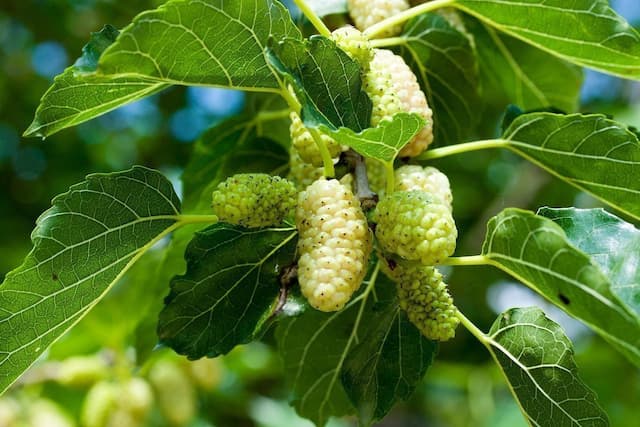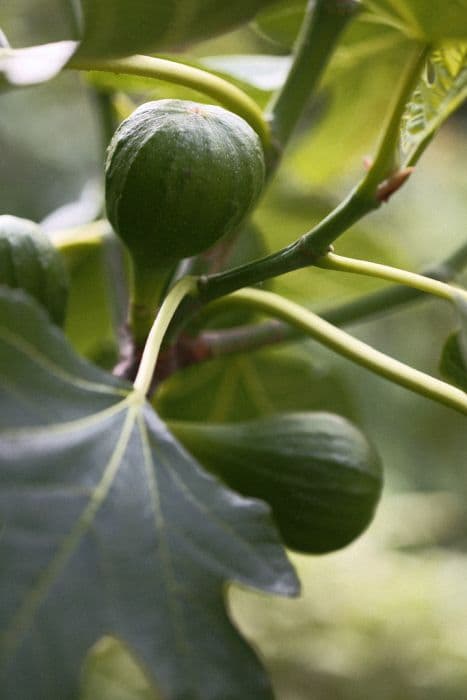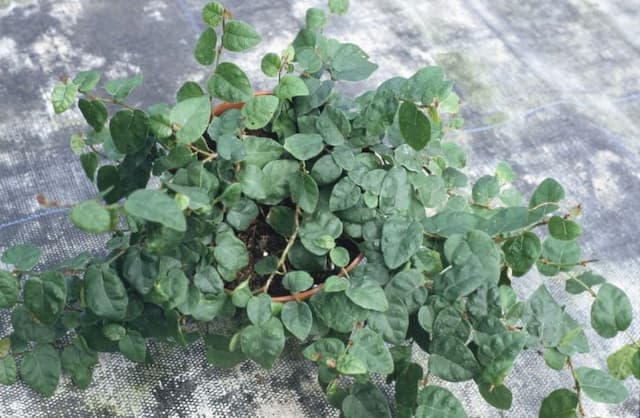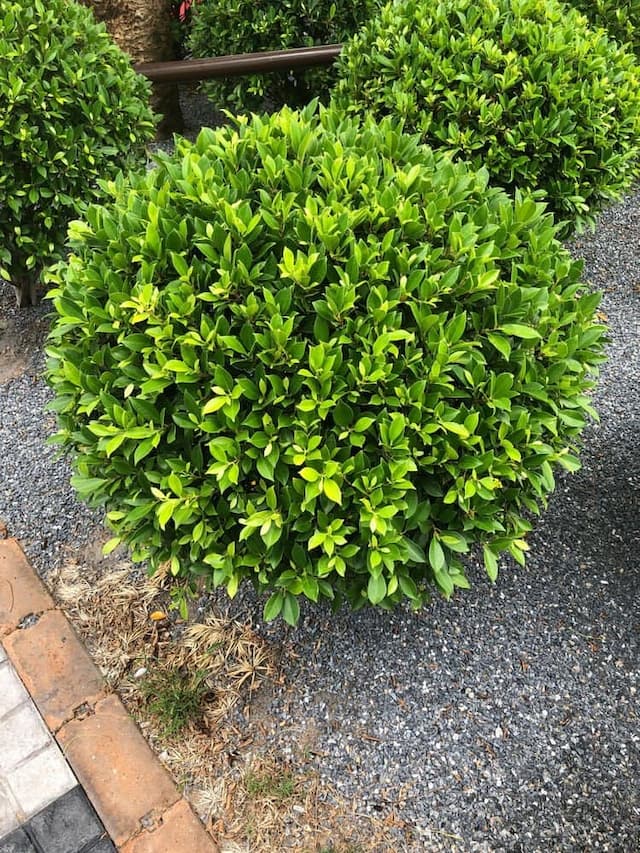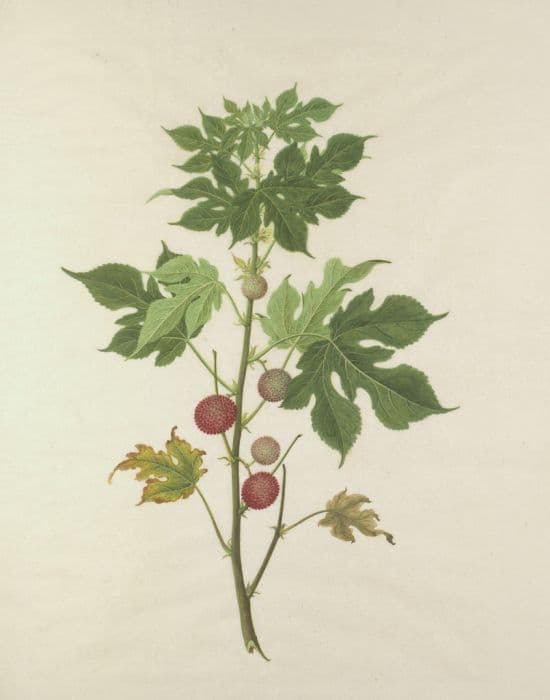Fiddle-leaf fig Ficus lyrata



ABOUT
Ficus lyrata, also known as the Fiddle-leaf fig, is a popular ornamental plant that is known for its large, glossy, fiddle-shaped leaves and upright, branching growth habit. It is native to West Africa and is typically grown as a houseplant or patio plant in other parts of the world.
Ficus lyrata plants are relatively slow-growing and can reach heights of up to 10-15 feet when grown indoors, and up to 30 feet or more when grown outdoors in warm, tropical climates.. They are generally easy to care for and can thrive in a wide range of growing conditions, as long as they are provided with bright, indirect light and the right temperature and humidity levels.
Overall, Ficus lyrata is an attractive and easy-to-care-for plant that makes a beautiful addition to any home or outdoor space.
About this plant
 Names
NamesFamily
Moraceae
Synonyms
Fiddle-leaf fig, Fiddle-leaf, Banjo fig, Lyre-leaf figtree, Banjo fig, Banana-leaf fig
Common names
Ficus pandurata
 Toxicity
ToxicityTo humans
Overall, Ficus lyrata is generally considered to be a safe and non-toxic plant that can be enjoyed by people of all ages. But since Ficuses in general have poisonous elements, it is worth keeping the plant out of the reach of children.
Take precautions when handling any type of plant, and seek medical attention if you experience any unusual symptoms after coming into contact with a plant.To pets
Ficus lyrata, also known as the fiddle leaf fig or banana leaf fig, is not considered to be toxic to animals.
However, as with any plant, it is always a good idea to keep ficus lyrata plants out of reach of pets, especially if you have a pet that is prone to chewing on plants. If your pet does ingest any part of Ficus lyrata, it is generally not cause for concern, but it is always a good idea to monitor your pet closely and seek veterinary attention if you notice any unusual symptoms or behavior.
 Characteristics
CharacteristicsLife cycle
Perennials
Foliage type
Evergreen
Color of leaves
Green
Height
Up to 30 feet
Spread
Up to 15 feet
Plant type
Tree
Hardiness zones
9
Native area
West Africa
Benefits
 General Benefits
General BenefitsAir purification qualities;
Improves mental health;
Increases oxygen level indoor;
Veryornamental plant. Medical Properties
Medical PropertiesWhile some people may claim that ficus lyrata has certain health benefits, there is little scientific evidence to support these claims.
 Air-purifying Qualities
Air-purifying QualitiesThere are no special cleansing properties of this plant.
 Other Uses
Other UsesSome people claim that the leaves of ficus lyrata can be used as a natural insect repellent, although there is little scientific evidence to support this claim. However, ficus lyrata plants are generally not prone to being infested by pests, so they may have some natural repellent properties.
Interesting Facts
 Feng Shui
Feng ShuiAccording to feng shui principles, Ficus lyrata plants are considered to be particularly auspicious and are thought to bring prosperity and good luck to those who keep them in their homes or offices. It is believed that placing a Ficus lyrata plant in a window or near a doorway can help to create a sense of enclosure and protect the space from negative energy.
These plants are often used in feng shui practice as a way to attract positive energy and enhance the overall energy flow of a space. If you are interested in using feng shui principles to enhance the energy of your home or office, consider incorporating a Ficus lyrata plant into your decor. Zodiac Sign Compitability
Zodiac Sign CompitabilityThere is no particular astrological association with Ficus lyrata therefore considered to be compatible with all signs.
Ficus lyrata is a popular and easy-to-care-for plant that is grown for its attractive foliage and graceful, upright growth habit, and can be enjoyed by people of all zodiac signs.
 Water
WaterProper watering is essential for maintaining the health and vitality of a Ficus lyrata plant. It is important to water your Ficus regularly, but be careful not to overwater it. Allow the soil to dry out slightly between waterings, and then water the plant thoroughly until the water drains out of the bottom of the pot.
During the summer months, Ficus lyrata plants will likely need to be watered: 1 - 2 times a week, depending on the size of the pot and the moisture level of the soil.
In the winter, Ficus lyrata plants will typically need to be watered less frequently. Usually it is about 1 time a week or less.
It is important to pay attention to the moisture level of the soil and the needs of the plant, and adjust your watering schedule accordingly to ensure that your Ficus lyrata plant stays healthy and thriving. Light
LightFicus lyrata plants prefer bright, indirect light, but can tolerate some shade. It is important to avoid placing Ficus lyrata plants in a location that receives direct sunlight, as this can cause the leaves to yellow and scorch.
 Temperature
TemperatureWhen it comes to temperature conditions, Ficus lyrata plants prefer warm, humid environments and can tolerate a wide range of temperatures. They will generally grow best in temperatures between 70-90 °F, and can tolerate temperatures as low as 50 °F for short periods of time. However, it is important to avoid exposing Ficus lyrata plants to extreme temperature fluctuations or temperatures below 50 °F, as this can cause stress or damage to the plant.
 Pruning
PruningIt is necessary to prune any dead, damaged, or diseased leaves or branches, as well as any overgrown or leggy growth, in late winter or early spring, before the plant begins to actively grow again.
 Soil
SoilFicus lyrata plants prefer soil with a slightly acidic pH range of 6.0 to 6.5. To create the ideal soil mixture for your Ficus lyrata plant, you can start with a well-draining potting mix that is specifically formulated for indoor plants. To improve drainage, you can also add a small amount of perlite or coarse sand to the mix.
 Repotting
RepottingWhen it comes to repotting Ficus lyrata plants, the timing and frequency will depend on the size and age of the plant, as well as the size of the pot it is growing in.
As a general rule, ficus lyrata plants should be repotted every 2-3 years, or when they outgrow their current pot and become pot-bound. You can generally tell when a Ficus lyrata plant needs to be repotted when the roots start to grow out of the drainage holes in the bottom of the pot, or when the soil dries out more quickly than usual. Humidity & Misting
Humidity & MistingFicus lyrata plants prefer a humidity level of around 50-70%.
To maintain the appropriate humidity level for your Ficus lyrata plant, you can place a humidity tray under the plant, filled with pebbles and water, mist the leaves of the plant, put a humidifier next to the plant. Suitable locations
Suitable locationsIndoor
All year round
Outdoor
Ficus lyrata plants can be grown outdoors in warmer climates, such as in USDA hardiness zones 10 and 11.
When growing Ficus lyrata outdoors, it is important to choose a location that receives bright, indirect light and has well-draining soil. This will help to ensure that the plant receives the light and moisture it needs to thrive.Hardiness zone
10 - 11 USDA
 Life cycle
Life cycleThe life cycle of a ficus lyrata plant begins when it is propagated from a cutting or seed. As the plant grows, it will produce new leaves and branches, and will eventually reach its full size and maturity. Ficus lyrata plants are generally long-lived and can continue to grow and produce new leaves and branches for many years.
 Propogation
PropogationPropogation time
Spring - early summer
By CUTTINGS:
Choose a healthy stem with at least two or three leaves, and cut it off the parent plant using clean, sharp scissors or pruning shears. Remove the lower leaves from the stem cutting, and dip the cut end in rooting hormone to help stimulate root growth. Plant the stem cutting in a small pot filled with a well-draining potting mix, and place the pot in a warm, humid location. Water the soil regularly to keep it moist, but not soggy, and be patient, as it can take several weeks or even months for the stem cutting to root and produce new growth.
By SEEDS:
Start by filling a small pot with a well-draining potting mix, and moisten the soil. Sow the seeds on the surface of the soil, and cover them lightly with a thin layer of soil or vermiculite. Place the pot in a warm, humid location, and keep the soil moist, but not soggy. It can take several weeks or even months for the seeds to germinate and produce new growth, so be patient.
 Pests
PestsSpider mite, Thrips, Scale insects, Mealybug, Aphid
 Diseases
DiseasesAnthracnose, Root Rot, Powdery mildew, Leaf spot



